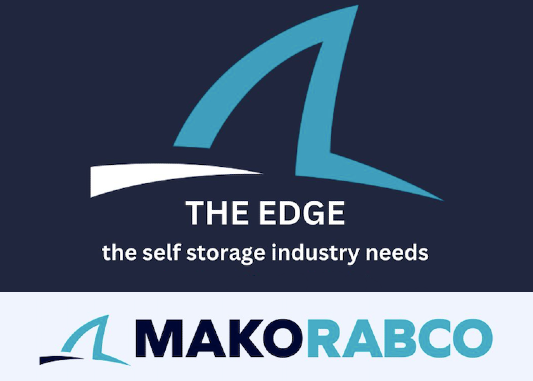The Capital Stack: The Building Blocks of Self-Storage Investing
Navigating the world of self-storage investing can be an adventure. To find success, you need to know your way around financing. In this article, we’ll learn more about the capital stack. It’s a tool that all savvy self-storage investors need to understand.
Like building a tower with various blocks, each part of the capital stack has a role in creating a strong investment. We’ll start with the solid ground of senior debt and climb to the heights of common equity. Our goal is to give you clear, simple insights so you can make smart choices in your investments. Let’s explore these financing layers together and set you up for a successful journey as self-storage investors.
Senior Debt: The Steady Bedrock
Imagine you’re building a big, strong tower out of blocks. In the world of self-storage investing, senior debt is like the first layer of blocks. It’s essential because it forms the base of your investment tower. Just like you’d want the bottom blocks to be strong and steady, senior debt gives your investment that solid foundation.
So, what exactly is senior debt? Think of it as a particular loan that self-storage investors use. When investors want to buy or improve a self-storage facility, they often borrow money. Senior debt is the first loan they take, and it’s vital because it’s the safest. Why is it safe? Because if something goes wrong and the investor can’t pay back the money, the lender who gave the senior debt gets paid back before anyone else. It’s like being at the front of the line when it’s time to get your money back.
Self-storage investors like senior debt for a few reasons. First, it’s like having a solid foundation for your building; it gives your investment a steady base. This makes investors feel more secure because they know that the senior debt lenders are the first to get their money back if things don’t go as planned.
But, like everything in life, there are pros and cons. Here's a quick list for self-storage investors:
Pros
-
- Safety First: It’s the safest type of debt because it gets paid back first.
- Steady Base: It provides a strong and secure foundation for your investment.
- Lower Interest: Senior debt often has lower interest rates than other types of loans.
Cons
-
- Strict Rules: The terms can be strict, and you have to follow them closely.
- First Dibs on Assets: If you can’t pay it back, the lender has first rights to your self-storage facility.
- Limited Flexibility: You might get less money than you would with other types of loans, so you have less wiggle room for other investments.
In summary, senior debt is like your investment tower’s trusted, strong base layer of blocks. It’s a favorite for self-storage investors because it’s safe and secure, but it’s important to remember it comes with specific rules and limits. Like in a game of building blocks, choosing the right base sets you up for success.
Mezzanine Debt: The Tactical Mid-Layer
Let’s continue with our building block tower analogy. If senior debt is the strong base layer, then mezzanine debt is like the middle layer of blocks in your investment tower. This layer is interesting because it mixes a bit of risk with some great opportunities.
So, what’s mezzanine debt? It’s a type of loan that comes after senior debt. Imagine you’re an investor in self-storage and already have your base layer (senior debt) set. Now, you want to add more blocks (or money) to make your tower (investment) bigger. This is where mezzanine debt comes in. It’s like a booster that helps you grow without giving away too much of your tower to others.
Why do self-storage investors use mezzanine debt? Sometimes they need more money than what they got from senior debt, but they don’t want to give away parts of their investment (or equity) to get it. Mezzanine debt is a smart choice because it’s a way to get that extra money without losing too much control of their self-storage investment.
However, there’s a balance of good and not-so-good points to consider. Here’s a quick list for self-storage investors:
Pros
-
- More Money: It lets you borrow more, which can mean a larger investment.
- Keep Control: You don’t have to give away as much ownership as you would with equity.
- Bigger Returns: If your self-storage investment does well, you can make more money since you still own a big part of it.
Cons
-
- Higher Risk: It’s riskier than senior debt. If things go wrong, you have to pay back senior debt first.
- Higher Cost: Mezzanine debt usually comes with higher interest rates.
- Complex Terms: The agreements can be more complicated than senior debt.
In short, mezzanine debt in self-storage investing is like the adventurous middle layer of your block tower. It’s for those who want to grow their investment and are OK with taking more risk. By using mezzanine debt, investors can add more to their investment without giving too much away, but they need to be mindful of the higher risks and costs involved. It’s all about balancing the risks and rewards to build your investment tower just right.
Preferred Equity: The Adaptable Component
Continuing with our building block tower analogy, preferred equity is like a special set of blocks that fit just above the base (senior debt) and middle (mezzanine debt) layers. This part of your investment tower is unique because it’s flexible and offers impressive benefits.
So, what is preferred equity? It’s a mix between a loan and owning a part of the self-storage investment. Imagine you’re a self-storage investor and have your base and middle layers of blocks set up. Now you want to add some special blocks that give you a mix of safety and the chance to earn more if your investment does well. This is where preferred equity comes into play.
Preferred equity is excellent for investors who want a bit of both worlds: the safety of a loan and the chance to earn like an owner. It’s like having a VIP ticket that gives you some special perks. If the self-storage investment makes a lot of money, you get to share in those profits. Plus, if things get challenging, preferred equity is safer than regular equity because you get paid back before the common equity holders.
But, as always, there are pros and cons to think about. Here’s a quick list for self-storage investors:
Pros
-
- Safety Plus Upside: You get a safer investment than regular equity but can still earn from the property’s success.
- Priority in Payments: In case of financial hiccups, you get paid back before those with regular equity.
- Flexible Terms: Preferred equity can have different terms, giving you more options.
Cons
-
- Capped Earnings: Your share of profits might be limited, unlike regular equity.
- Less Control: You might have less say in the property’s management than regular equity holders.
- Risk Exists: While safer than regular equity, it’s still riskier than senior or mezzanine debt.
In essence, preferred equity in self-storage investing is like adding a smart, adaptable layer to your investment tower. It’s perfect for those who want safety and the opportunity to earn from the property’s success. With preferred equity, investors get some of the safety of debt and the profit potential of equity, making it a popular choice for those looking to diversify their investment strategy. It’s all about finding that sweet spot between risk and reward!
Common Equity: The Peak Of Possibility
Let’s reach the top of our building block tower analogy with common equity. This is the topmost layer, like the peak of a mountain. Common equity is exciting and risky in the world of self-storage investing. It’s where the highest risks and the biggest rewards can be found.
So, what is common equity? It’s like owning a piece of your self-storage investment. When you put money into common equity, you’re not just lending money and getting it back with interest like senior or mezzanine debt. Instead, you own part of the self-storage facility. If the facility does well, you could make a lot of money. But it also means that you might lose what you put in if things don’t go well.
Self-storage investors who choose common equity are usually those who are willing to take big risks for the chance of big rewards. They’re like adventurers climbing to the top of a mountain, knowing that the journey is risky, but the view at the top can be breathtaking.
As with all investments, there are pros and cons to consider. Here’s a quick list for self-storage investors:
Pros
-
- Big Rewards: If the self-storage does well, you can make more money.
- Ownership Power: You get to have a say in how the self-storage facility is run.
- Unlimited Potential: There’s no cap on how much money you can earn if the property is successful.
Cons
-
- High Risk: You could lose your investment if the property doesn’t do well.
- Last to Get Paid: In case of financial issues, common equity holders are the last to get any money back.
- Long-Term Commitment: It might take a while before you see any returns on your investment.
In summary, common equity in self-storage investing is like standing at the peak of a mountain. It’s thrilling and offers the chance for substantial rewards, but the journey is risky and requires a strong appetite for high stakes. For adventurous and patient investors, common equity can be the ultimate investment choice, offering the potential for significant returns and a strong sense of ownership of the property.
Crafting Wise Financing Choices
Understanding the different levels of the capital stack is crucial for success in self-storage investing. Like building a tower with different types of blocks, each financing option offers unique benefits and risks. At the base, we have senior debt, offering stability and safety with lower risk but stricter terms. The middle layer, mezzanine debt, provides additional funding with higher risk and cost but allows for greater control and potential returns. Preferred equity comes next, blending the safety of debt and the rewards of equity, offering a safer option than common equity but with some limitations on earnings. At the top is common equity, the peak of potential rewards, where the risks are highest but so are the possibilities for substantial gains.
A mix of these financing types can create a balanced portfolio for many investors, reducing overall risk while maximizing profit opportunities. Staying informed and consulting with financial experts can help tailor your strategy to align with your goals and market conditions, ensuring a more effective and impactful investment journey.
At Self Storage Investing, our commitment is to arm you with the insights and tools needed to excel in this dynamic market. Whether you’re a veteran investor or just starting your journey, we’re here to support your path to self-storage investment success.
Stay informed, stay ahead, and achieve your self-storage goals.
–
Scott Meyers is the founder of Self Storage Investing.
More Content
Popular Posts
The self storage industry is in a precarious...
Joe Shoen, CEO of U-Haul, has had enough.
Like its name implies, Surprise, Ariz., a...
Joe Shoen has had enough.
In a record-breaking deal finalized May 12,...
Senate Bill 709 (SB709) has many in the...
Donald Trump has just reclaimed the White...
The question of “abandonment” of stored...
Self-storage operators wear a lot of hats....
In 1992, Clinton strategist James Carville...
Recent Posts
When Neville Kennard left for a work trip to...
Self-storage software is no longer...
The self-storage industry continues to...
Fires in California. Tornadoes in Kansas....
From policy pivots in Ottawa to tariff...
Self-storage operators have struggled to...
Their signature red coats may draw attention...
Nailing down Josh and Melissa Huff for an...




















